
WARNING: All technical data in this publication, especially for handloading, reflect the limited experience of individuals using specific tools, products, equipment and components under specific conditions and circumstances not necessarily reported in the article and over which the National Rifle Association (NRA) has no control. The data has not otherwise been tested or verified by the NRA. The NRA, its agents, officers and employees accept no responsibility for the results obtained by persons using such data and disclaim all liability for any consequential injuries or damages.
Let’s begin this .22 Long Rifle handloading soiree by immediately addressing the elephant in the living room. Shooters and handloaders generally assume there’s a hazard in handloading the .22 LR rimfire cartridge: Crushing a case rim in the shell holder and thus igniting the primer and loaded cartridge. But considerable research for this article turned up not a single statement from any rimfire handloader who personally suffered such an event, much less any injury.
Genuine obstacles to handloading .22 LR are the lack of heel-base bullets, factory primed cases and load data. And typical powder scales are not sensitive enough to accurately weigh the tiny powder charges in the .22 LR for shot-to-shot consistency. The lack of data and components are attributable to a long history of .22 LR cartridges being so ubiquitous and inexpensive that handloading them has never been necessary. And that’s still true. Dabbling in handloading rimfire cartridges has been for the curious, whose principal interest is in the challenge of handloading, and who possess enough experience and knowledge to safely experiment. Now, it’s also for the precision shooter and handloader seeking an edge in long-range .22 LR competition.
Tools, Brass and Bullets
Cutting Edge Bullets has been manufacturing lathe-turned copper bullets for center-fire King of 2 Miles competition for several years, and the company has now turned its attention to the .22 LR long-range game. The company’s patent-pending, .22 LR 32-grain bullets require only industry standard 1:16- inch rifling twist rate barrels; optional bullets of 42 grains will need faster twists. Cutting Edge Bullets also offers dies, shell holders and primed brass cases for handloading. The company provided tools and components to load 100 cartridges to evaluate for this article.
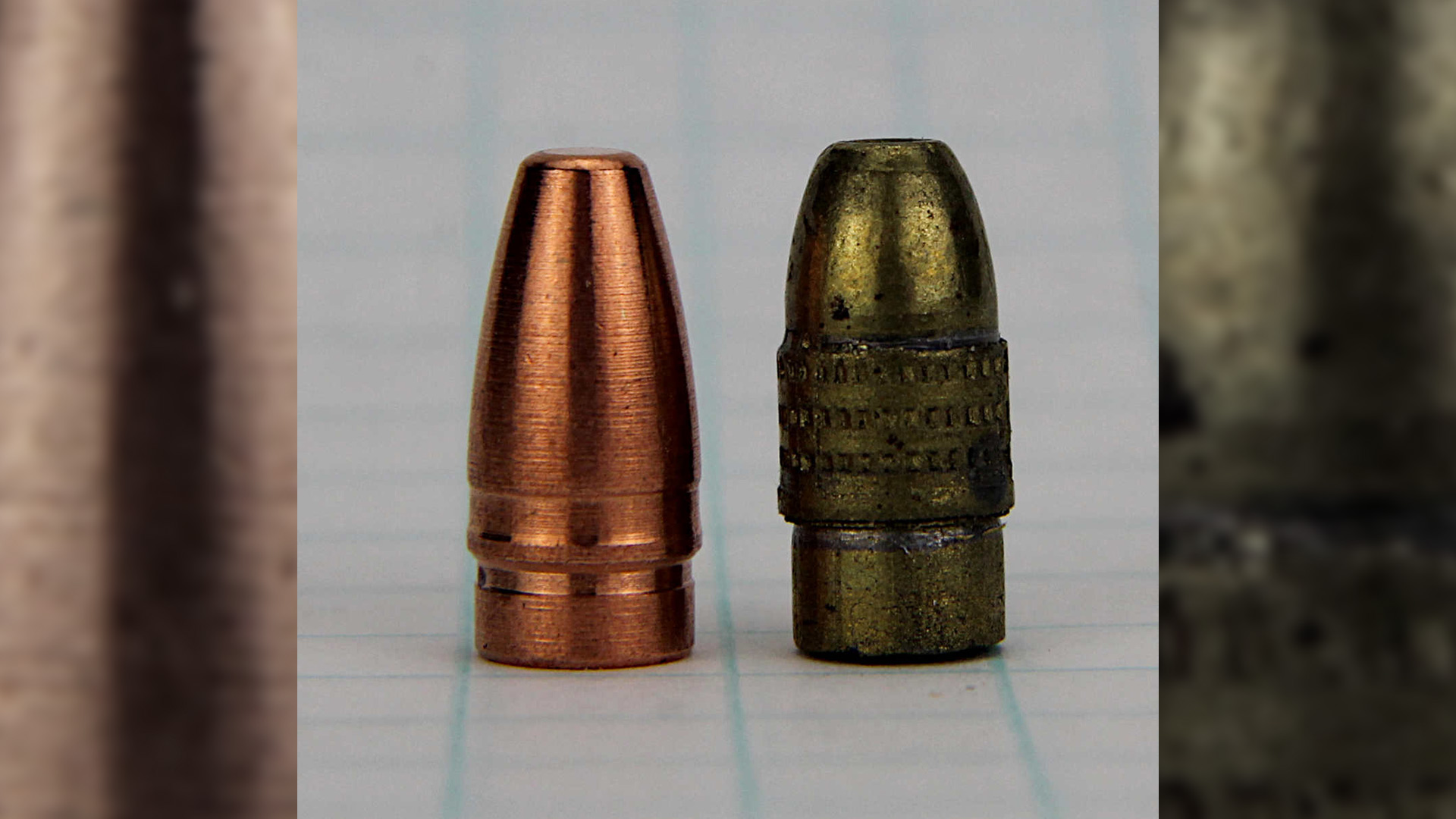
Cutting Edge Bullets sent tools and components packaged in plastic prescription pill bottles pasted with “CuRx” (“Copper Prescription”) labels. The primed brass bears the letter “C” of the CCI company. As expected, the 32-grain, solid copper, lathe-turned bullets have the typical .22 LR heel base; the forward portion of the bullets taper to terminate in a flat point. The bullets come to full diameter in front of the heel, then that full diameter is interrupted by a shallow, narrow groove before resuming full diameter and tapering to a flat point. The result is two, extremely narrow bearing surfaces to engage the rifling grooves. The average of 10 random bullets weighed and measured gave the following results:
- Weight: 31.95 grain
- Overall length: 0.4755 inch
- Heel diameter: 0.2079 inch
- Groove diameter: 0.2178 inch
- Bearing surface diameter: 0.2219 inch
Bullets weighed between 31.91 and 31.99 grains. Of those 10 bullets, nine have bearing surface diameters of precisely 0.2220 inch— only one differed, at 0.2215 inch, which brough the average down significantly. Eight of the 10 have heels of 0.2080 inch, with the remaining two measuring 0.2075 inch. Overall length differed only from 0.4750 to 0.4760 inch—one-thousandth of an inch.
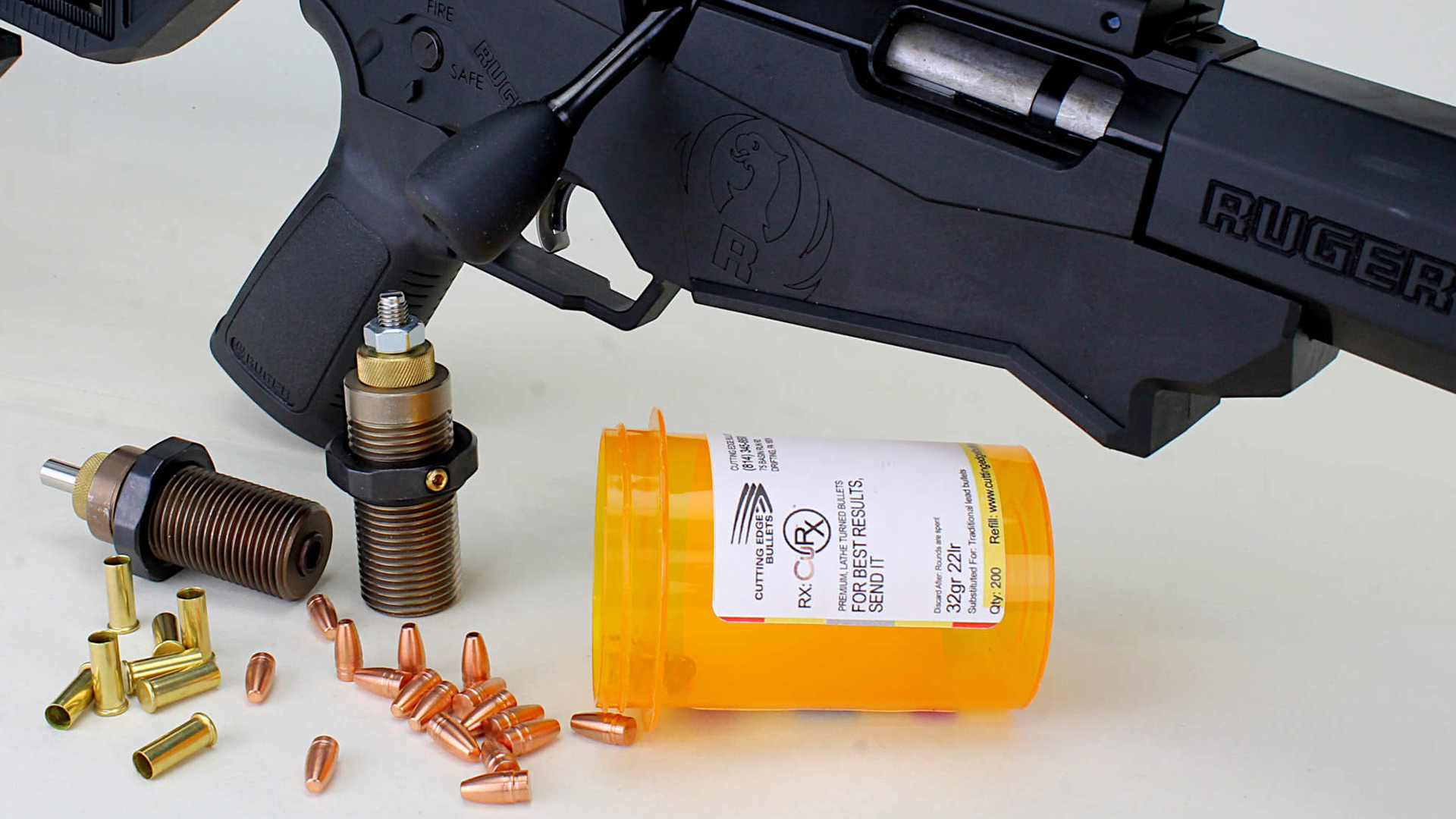
SAAMI standard for .22 LR bore and groove diameters are, respectively, 0.217 inch and 0.222 inch. As such, the 32-grain bullets from Cutting Edge are nominally exactly groove diameter at the bearing surfaces, and average about 0.001 inch over bore diameter within the bullet’s groove.
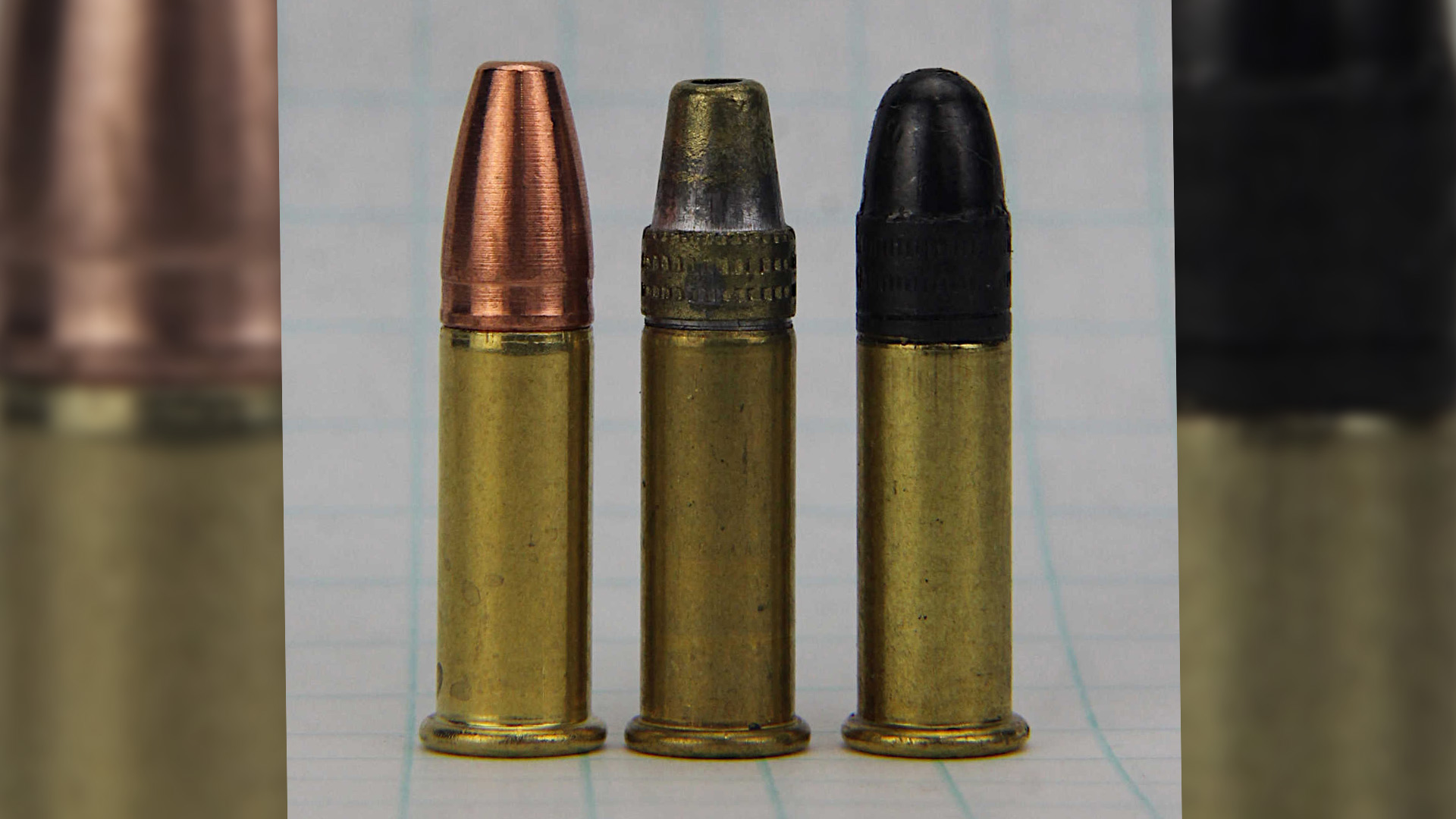
I was incorrect when I reported in an earlier article that the design of the Cutting Edge Bullets .22 LR bullet is intended to keep it supersonic all the way to the target. “They start out supersonic at 1,400 to 1,450 f.p.s. but pass through the transonic stage of flight with excellent predictability, especially with barrel twist rates faster than 1:16,” Cutting Edge Bullets owner Dan Smitchko corrected me. Note also that, with a G1 ballistic coefficient (BC) of about 0.111, the bullets don’t possess a BC higher than standard round nose .22 LR bullets, so calling them, “high BC” would also be incorrect. Instead, it is perhaps more accurate to refer to them as, “improved performance” bullets for the .22 LR.
Dies and Shellholder
Cutting Edge Bullets’ .22 LR die set has only bullet seating and crimping dies; as the .22 LR cases are not intended to be reloaded after firing, no resizing die is necessary. A .22 LR shell holder is included.
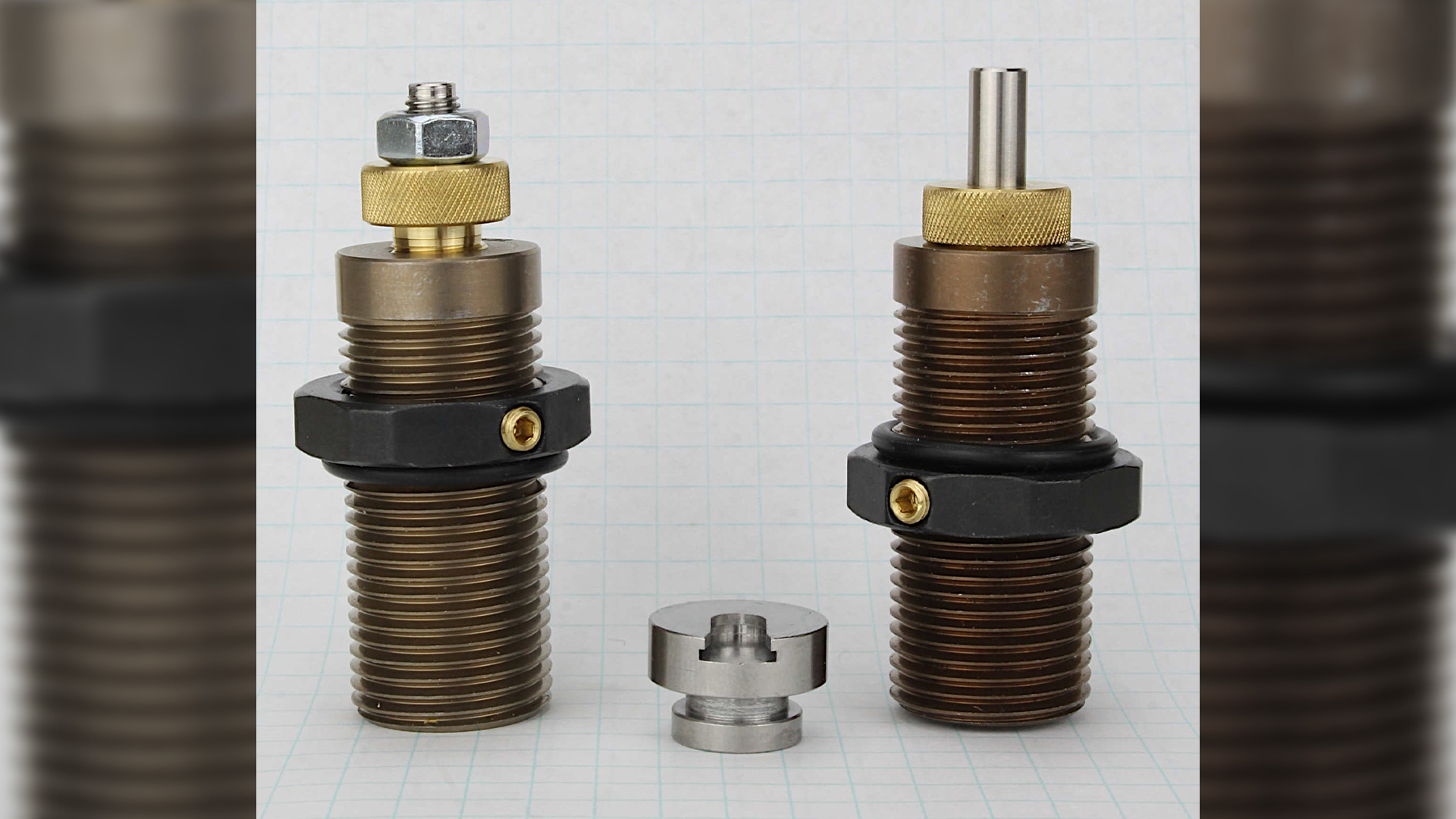
Seating bullets with the Cutting Edge Bullets’ die has an unusual option: it can be accomplished as usual with the press, or simply by hand. The crimping die accomplishes its job with a sliding, six-fingered collet to apply an even circumferential pressure where the bullet heel protrudes into the case. A steel shaft, rather like a bullet seating stem, holds the bullet centered during crimping, and a spring surrounding the shaft assists in keeping the bullet aligned. Crimp tension is adjusted by screwing the die into or out of the press.
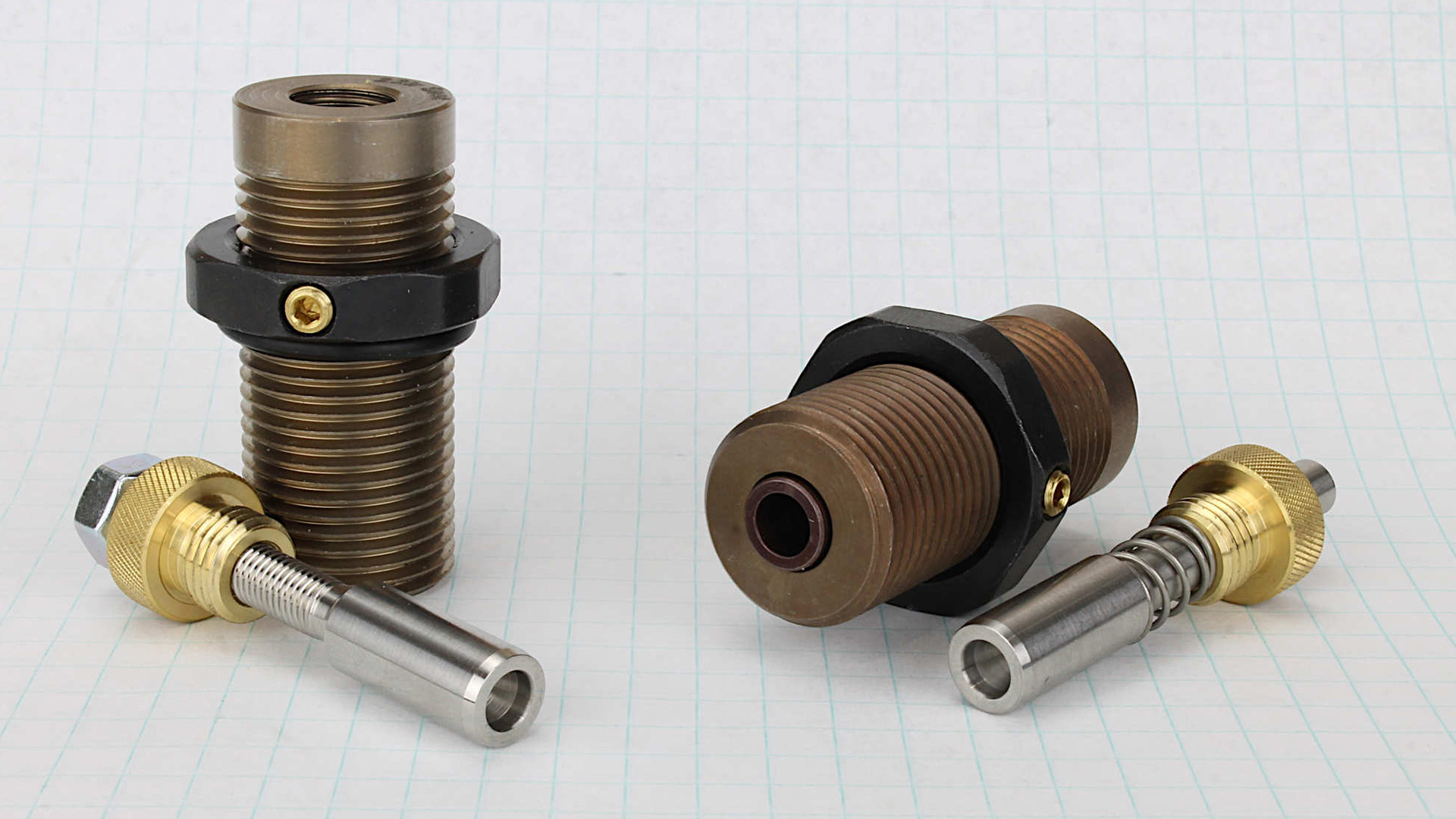
In addition to the dies and shell holder, handloaders new to the .22 LR will need three specialized items not usually found on reloading benches. The first is a loading block to hold the cases for loading; I made my own by drilling ¼-inch holes through a piece of wood and gluing a second piece of wood on the bottom. Since then, Cutting Edge Bullets began offering plastic .22 LR loading blocks for sale. For storing and transporting loaded .22 LR cartridges, I used MTM’s plastic cartridge box (item P-100-22M) for .17 HMR and .22 WMR cartridges. Third is a scale that can weigh powder charges down to 0.01 grain (one one-hundredth).
Sensitive Scale
Ordinary powder scales are sensitive to only 0.10 grain (one-tenth). This is too crude for precision .22 LR ammunition, because case volume is so miniscule that we need a scale more sensitive, to about +/- 0.01 grain (one one-hundredth). Powder scales also typically are accurate to only plus or minus one-tenth grain (+/- 0.10 grain), also too crude. As an example, given a .22 LR powder charge of two grains, with a +/- 0.10-grain tolerance scale, one case may get 1.9 grains while the next, 2.1 grains; that 0.20-grain spread represents a 10 percent difference in powder charges between those two cartridges. If you load your center-fire rifle cartridges with that much difference between them—say 42 grains in one case and 38 grains in another—the disappointing accuracy would be an understatement.
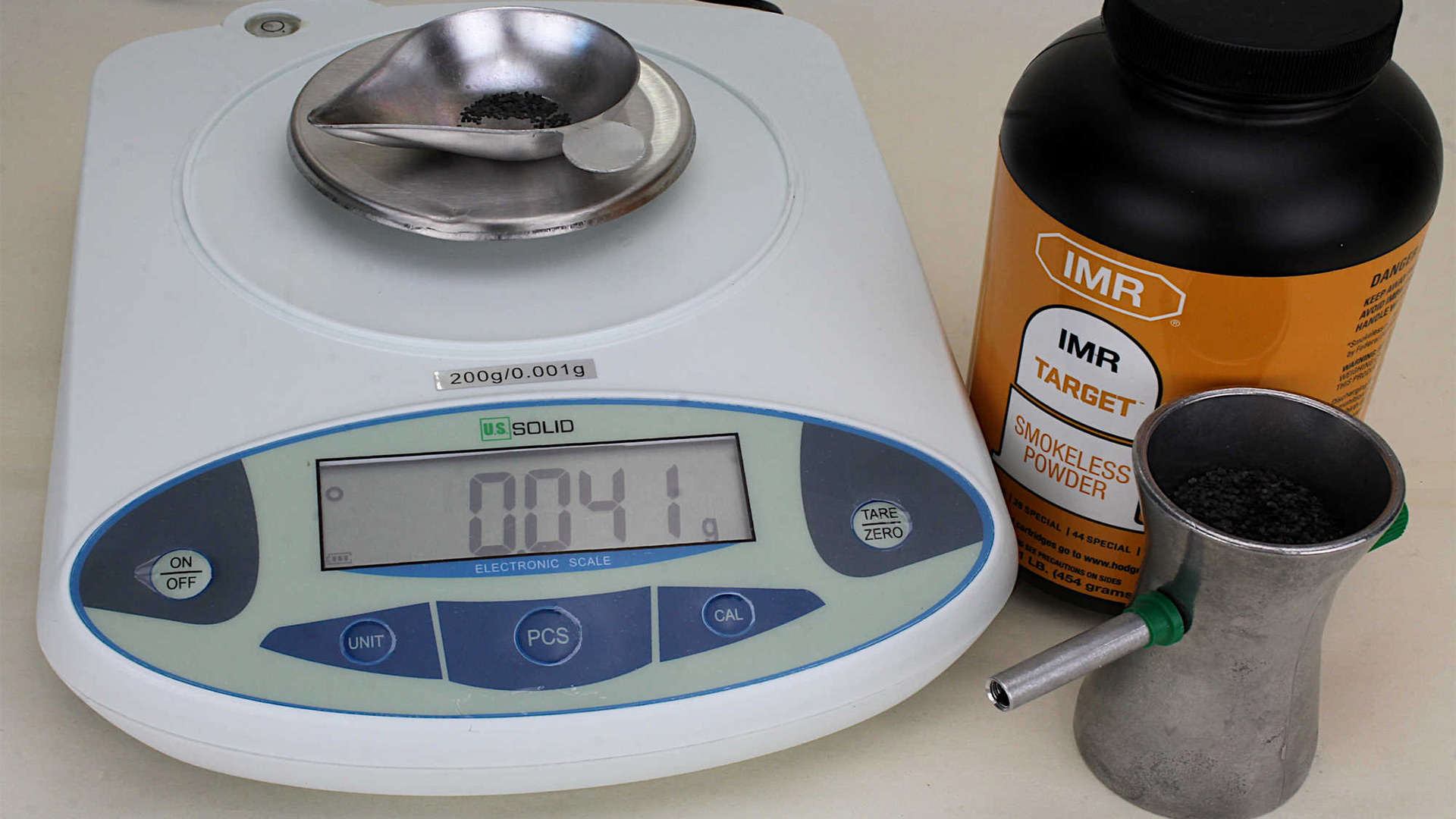
A “scientific” electronic scale purchased from U.S. Solid measures in grams rather than grains. To convert grains to grams, multiply the grain value by 0.0647. For example, two grains of smokeless powder, multiplied by 0.0647 is 0.129 grams. Trickling 0.129 measured grams of powder on the scale delivers a 2.0-grain powder charge. The scale’s accuracy is +/- 0.030 grain.
Data and Results
But where to start, as published .22 LR load data is nonexistent? Cutting Edge Bullets has done considerable load development in testing its new bullet, and were kind enough to share data. Vihtavuori 3N37 seems a logical first choice from the list, as it is used in manufacturing .22 LR ammunition. But rather than simply attempt duplicating efforts, I also struck out on my own with a fairly new pistol powder from Hodgdon—IMR Target—to add to Cutting Edge Bullets’ data.

With the provided 100 bullets and cases, I elected to use 80 for load development at 50 yards, then to fire the most promising load in the last 20 cartridges at 100 and 200 yards. As it turned out, however, I couldn’t duplicate the small groups and low extreme spreads (ES) that Cutting Edge Bullets achieved in its development, and when five shots spanned six inches at 100 yards, I terminated testing (see tables). The non-stellar results point to the scale as a likely culprit in needing to have a tolerance better than +/- 0.030 grain for handloading .22 LR, though neck tension or priming (the latter not in the handloader’s control) are also possible suspects. As well, the Ruger Precision Rimfire Rifle used here sports a standard SAAMI chamber, and the bullets may do better with a chamber of match dimension. Still, the exercise was useful in demonstrating that handloading .22 LR is do-able, given components and a sensitive-enough powder scale, and adds experiential knowledge to the handloader’s repertoire.
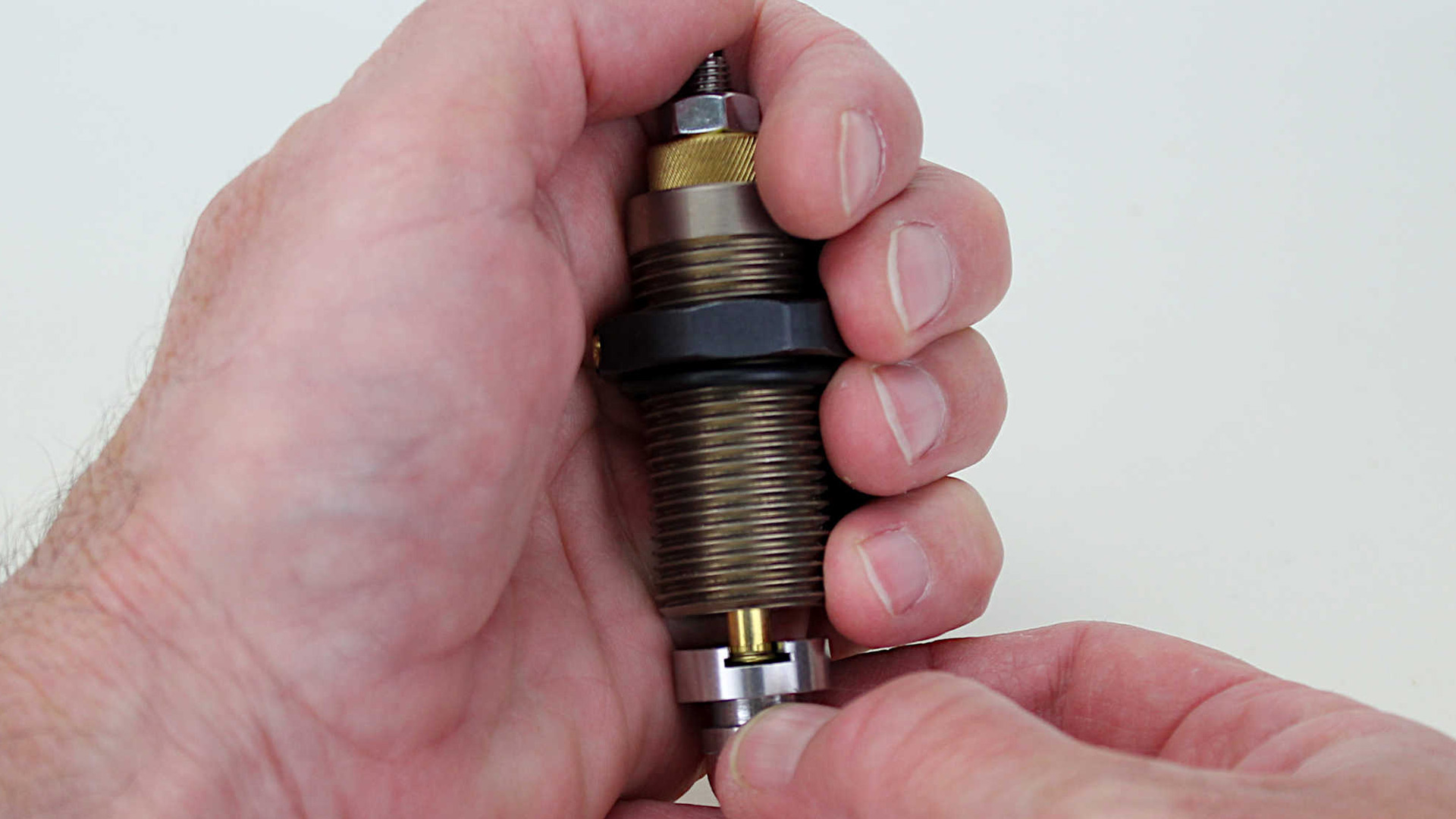
Packets of 200 32-grain bullets with primed brass, dies with shell holder and a .22 LR loading block are individually available at the Cutting Edge Bullets website; purchasing them all totals $200. The website also lists 42-grain bullets, but know that they require a custom rifled barrel with a 1:10-inch or faster twist.
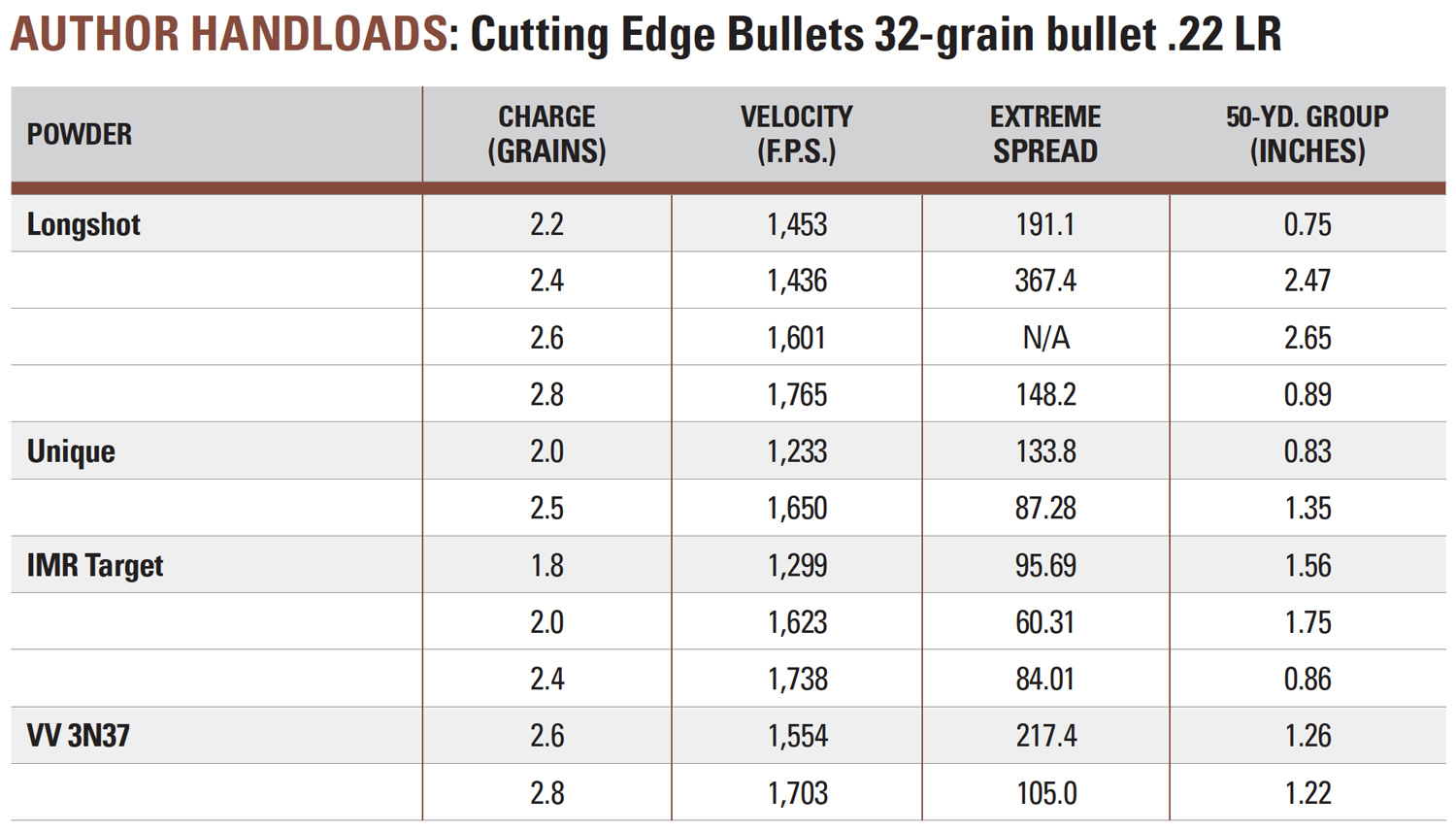
Why Bother?
There is, of course, a second elephant in the living room: “Is handloading .22 LR worth the trouble?” For those disposed to conversing with elephants, the answer is, “That depends.” We could ask the same question of reloading center-fire ammunition. Why bother? After all, factory match ammo today turns in excellent performance. Yet many of us handload, not because our ammo is necessarily superior to factory ammo, but because we enjoy the challenge, the process and usually some cost savings. And here’s a rare opportunity to participate in and contribute to something new in handloading. “It is important to understand this .22 LR thing is a completely different animal and everyone is still learning,” Dan pointed out in an email exchange.
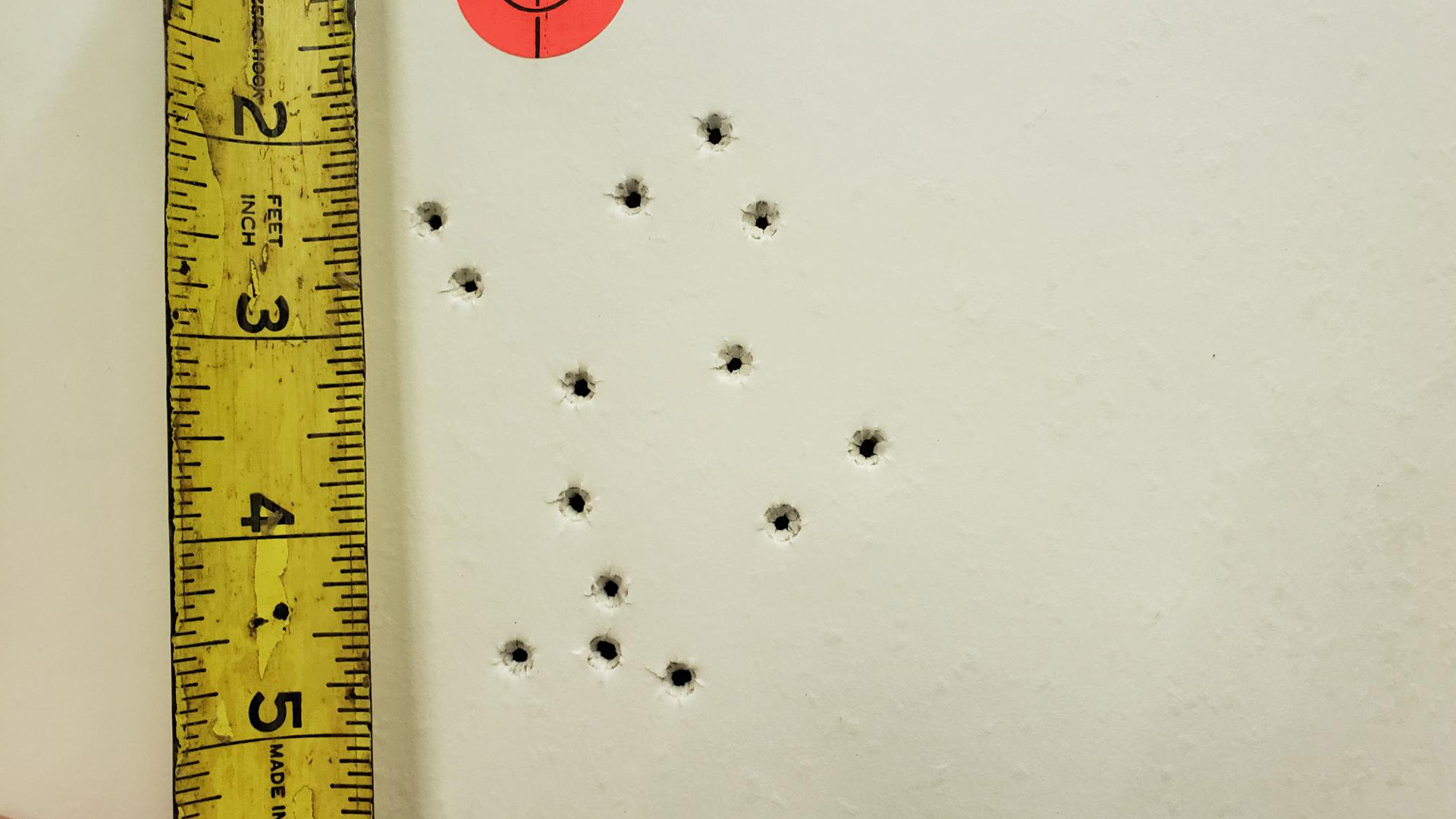
There’s also the DIY satisfaction of hitting the X with our own home-rolled ammo. And for .22 LR, there may be an additional egocentric reason—someone is going to be the first .22 LR competitor to win a match with handloads. That opportunity to be the first apparently has a time limit.
Read more: Review: Cutting Edge Bullets .22 LR Kit



































